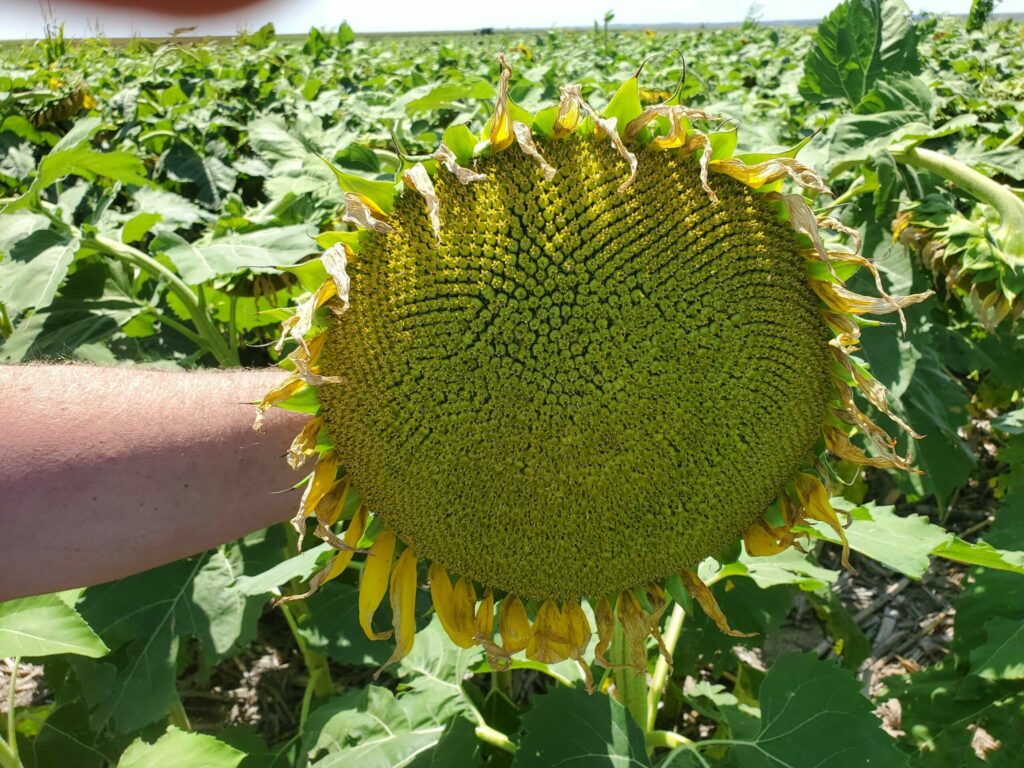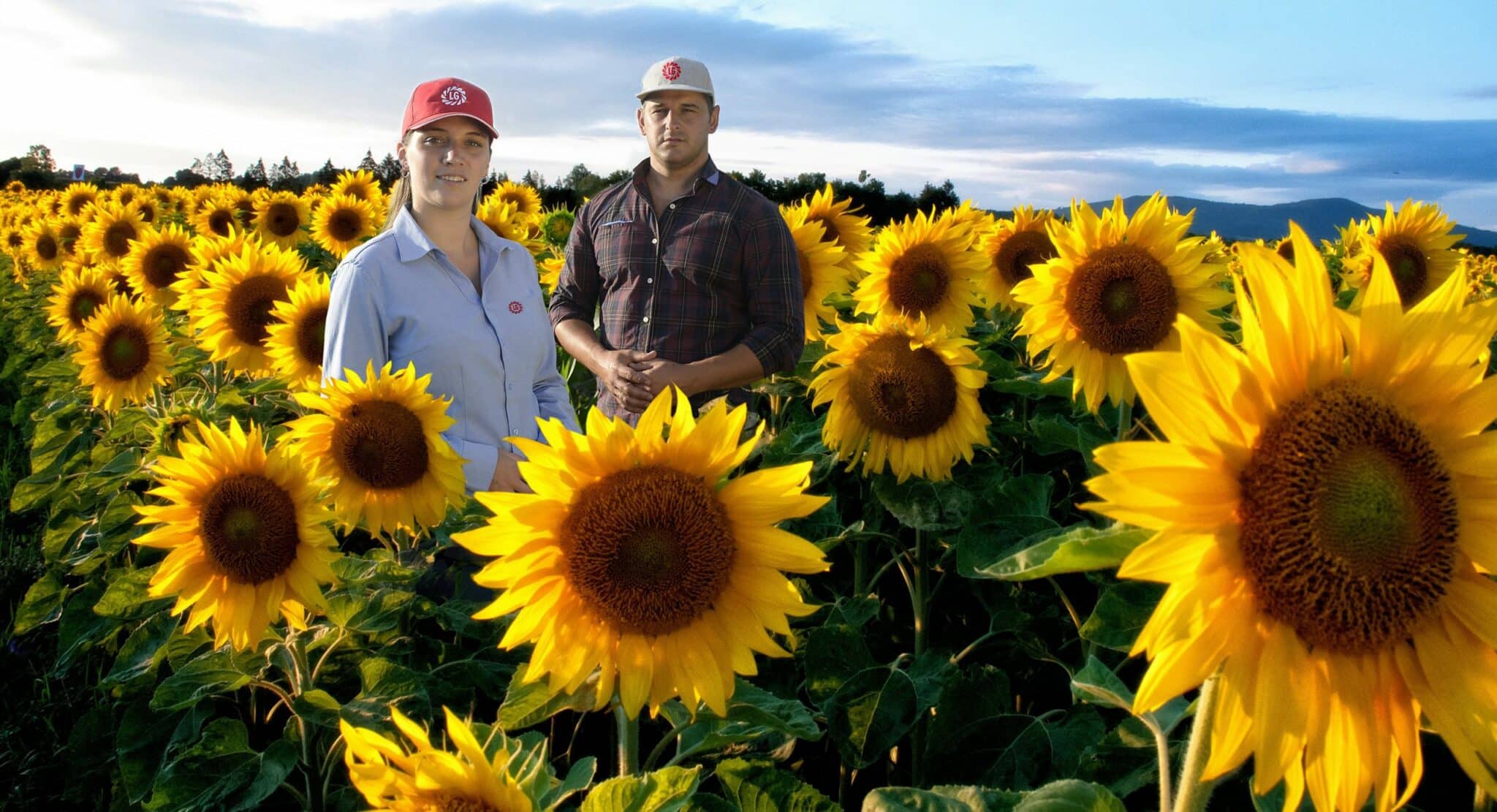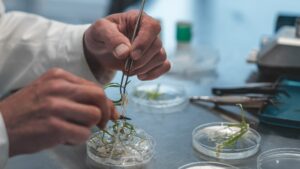Global acreage is growing due to one main consumer driver, and breeding companies are keeping pace.
Like the crop itself, the present, and future, for sunflowers is bright and cheerful. Growth in worldwide acreage continues, and according to industry experts such as Mark Jackson, general manager at Nuseed Americas, that’s almost all because of increasing demand for sunflower oil.
“The category is expected to grow more than 6% over the next five years, with India leading the demand side,” he explains. “India is the top importer of sunflower oil globally, and with increasing disposable income among consumers and their looking for healthier food options, sunflower oil will see more growth to come.”
Breeding of hybrids that provide healthier oil with more processing stability therefore continues, and in addition, oil processing methods are now in play that avoid the destruction of vitamins and other health-providing biochemicals, adding to the oil’s health profile.
Bill Gilbert agrees that demand for healthy, lower-priced edible oil is driving up demand for sunflower seed to plant around the world, especially demand in developing countries and in the Asia-Pacific region. Gilbert, who is the commercial marketing manager for the Americas at S&W Seed Company in Colorado, adds that “new oil products including high-oleic and the pressed oil segments, which have high smoke temperature points, are increasing in use for cooking.”
Besides sunflower oils traits however, there is another reason that the oil is in demand. In a recent report called “Sunflower Oil Market Growth, Trends and Forecasts 2020-2025,” experts from Research And Markets point to fluctuating prices of oils such as palm and soybean oil as a global demand driver. According to Nuseed, the global vegetable oil market is currently dominated by palm oil, followed by soybean, canola, sunflower and coconut oil.
The report’s authors note that snack manufacturers are “readily opting for sunflower oil due to its capability to impart good properties to the products at a comparatively lower cost,” and that in addition, sunflower oil “provides cost-effective solutions in other industries as well … It’s considered for a variety of skincare products due to its lower pricing as compared to other ‘nourishing’ oils like argan, almond and olive oil.”
Hybrid Landscape
Globally, there are some hybrid trait trends to make note of.
John Sandbakken, executive director of the National Sunflower Association, explains that in some other countries in Europe and beyond, some traditional linoleic hybrids are still being cultivated, but in the U.S., NuSun and high-oleic hybrids reign.
NuSun hybrids were introduced in 1998 through a collaboration between the sunflower industry and breeders at the U.S. Department of Agriculture. They produce a mid-oleic oil with under 10% saturated fat, shelf-stability without partial hydrogenation, great taste and food manufacture performance.
And while NuSun oil is still in demand, Sandbakken explains that because the market wants saturated fat levels at or below 7%, along with good stability and taste, all of which high-oleic oil provides, the shift in the U.S. to growing more high-oleic hybrids will continue.
To keep pace, companies like Iowa-based AgVenture are expanding their high-oleic offerings. For the 2021 season, AgVenture is adding a Clearfield hybrid called AF3691HC to its lineup, along with three other Clearfield hybrids (Imidazilone-tolerant) and four ExpressSun (Sulfonyl Urea-tolerant) hybrids.

Sandbakken notes that while seed stocks have been tight due to high demand, growers in the U.S. have also been enjoying new lucrative “Act of God” contracts from crushing companies, contracts wherein they deliver whatever they can. He believes domestic demand will continue to be strong for sunflower oil because some North American companies are adding it to their food products.
However, U.S. sunflower production, according to the United Nations Food and Agriculture Organization (FAO), is greatly exceeded by that in Argentina, Ukraine and Russia. Production in these countries accounts for 52% of global production and total global production is expected to be close to 60 million tons by 2050.
Nuseed’s Europe General Manager Patrick Dieterich notes that investment in growing technologies and processing is resulting in growers in Russia and Ukraine “moving away from farm saved seed into certified and higher-yielding hybrids.”
“As global demand grows, so will the demand for hybrids with higher yields, improved disease resistance, lower water usage and regional production performance,” Jackson adds.
Top Performance Issues
When asked to list the most serious concerns affecting current sunflower production, Gilbert points first to weed management.
“Broadleaf weeds have always been difficult to control,” he says, “but in recent years introduction of herbicide-tolerant hybrids has improved controls significantly.”
Clearfield hybrids gained large market share in early 2000s, and ExpressSun hybrids followed. Neither product provides perfect standalone solutions, says Gilbert, and generally require pre-emergent and/or tank mix post-emergent applications. He adds that the Clearfield hybrids have also enabled reasonable control of a parasitic weed called Orabanche only found in Europe that affects sunflower crops there.
On the disease front, white mold/sclerotinia fungus causes significant yearly yield loss in sunflowers grown for both oil seed and confection snacks, Gilbert explains.
“Fungicides provide little control and to date breeders have not been able to provide adequate genetic resistance,” he reports. “Phomopsis has also been an increasing problem over the past five years. This foliar and stem fungus causes seed loss and standability problems. Research has shown some value from herbicides and breeders are working to provide genetic tolerances.”
S&W’s leading sellers right now are Clearfield, but Gilbert says that because he and his colleagues are anticipating “more movement” to the ExpressSun technology.
“We will be addressing that as we bring forward new hybrids. Secondly, our lineup is focused on high-oleic,” he says. “We are considering adding NuSun, but the main lineup will continue to be high-oleic.”
David Pearson, head of branding at Limagrain Field Seeds, explains that Limagrain’s sunflower breeding activities are very much driven by technology, focused on both various herbicide tolerances and quality traits such as high-oleic. Limagrain sunflower seed is produced in Europe, Argentina and California.
“We consider sunflower a strategic crop,” Pearson says. “The oil has a wide appeal and that’s going to continue to be reflected in demand from farmers.”













